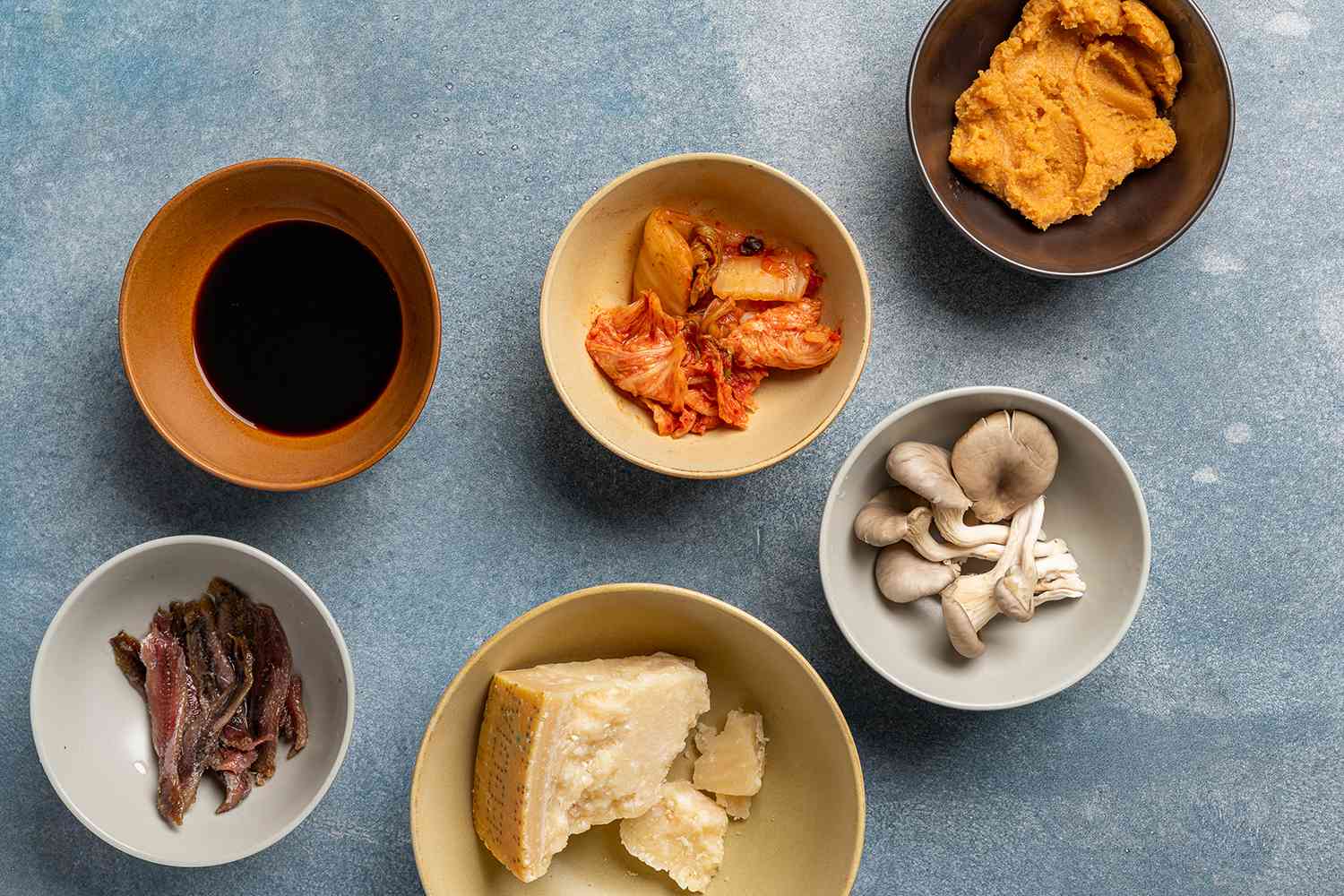
What is umami? Umami, often called the fifth taste, joins sweet, sour, salty, and bitter. This savory flavor, discovered by Japanese scientist Kikunae Ikeda in 1908, comes from glutamate, an amino acid found in foods like tomatoes, cheese, and mushrooms. Why is umami important? It enhances the taste of dishes, making them richer and more satisfying. Chefs and food lovers around the world celebrate umami for its ability to elevate culinary experiences. How can you experience umami? By incorporating umami-rich ingredients into meals, you can transform ordinary dishes into extraordinary ones. Ready to dive into the delicious world of umami? Let's explore 32 fascinating facts about this incredible taste sensation!
What is Umami?
Umami, often referred to as the fifth taste, is a savory flavor that enhances the taste of food. It was first identified by a Japanese scientist in the early 20th century. Let's dive into some fascinating facts about this unique taste sensation.
-
Umami is a Japanese word that translates to "pleasant savory taste."
-
The discovery of umami is credited to Kikunae Ikeda, a Japanese chemist, in 1908.
-
Ikeda identified glutamate, an amino acid, as the source of umami flavor.
-
Foods rich in umami include tomatoes, cheese, mushrooms, and soy sauce.
-
Monosodium glutamate (MSG) is a popular flavor enhancer that mimics umami.
-
Umami receptors are found on the tongue, just like sweet, salty, sour, and bitter receptors.
The Science Behind Umami
Understanding the science behind umami can help appreciate its role in culinary arts and nutrition. Here are some scientific insights into umami.
-
Umami taste is primarily detected through receptors that respond to glutamate.
-
Glutamate is naturally present in many protein-rich foods.
-
Inosinate and guanylate, found in meat and fish, also contribute to umami.
-
The combination of glutamate with inosinate or guanylate intensifies the umami flavor.
-
Umami enhances the palatability of food, making it more enjoyable to eat.
-
This taste can stimulate saliva production, aiding in digestion.
Umami in Different Cuisines
Umami plays a significant role in various cuisines around the world. Let's explore how different cultures incorporate this savory taste.
-
Japanese cuisine heavily relies on umami-rich ingredients like miso, soy sauce, and seaweed.
-
Italian cuisine uses tomatoes, Parmesan cheese, and cured meats to achieve umami.
-
Chinese cuisine often includes soy sauce, fermented beans, and mushrooms for umami.
-
French cuisine utilizes ingredients like truffles, aged cheeses, and broths to enhance umami.
-
Thai cuisine combines fish sauce, shrimp paste, and tamarind for a rich umami taste.
-
Korean cuisine features fermented foods like kimchi and gochujang, which are high in umami.
Health Benefits of Umami
Umami not only makes food taste better but also offers several health benefits. Here are some ways umami can positively impact health.
-
Umami-rich foods can help reduce the need for added salt, promoting heart health.
-
This taste can enhance the flavor of low-fat foods, making them more appealing.
-
Umami may help increase appetite in elderly individuals or those with diminished taste sensitivity.
-
Consuming umami-rich foods can lead to a more balanced diet by encouraging the intake of nutrient-dense foods.
-
Umami can improve satiety, helping with weight management.
-
It may also play a role in gut health by promoting the growth of beneficial bacteria.
Fun Facts About Umami
Here are some fun and lesser-known facts about umami that might surprise you.
-
Umami was officially recognized as the fifth taste in 1985.
-
The umami taste can be found in breast milk, which helps infants develop a preference for savory flavors.
-
Some people are more sensitive to umami than others due to genetic differences.
-
Umami can enhance the flavor of other tastes, making sweet, salty, sour, and bitter foods more enjoyable.
-
The umami taste is often described as brothy, meaty, or savory.
-
Umami is considered a key component in creating the concept of "kokumi," which refers to the richness and complexity of flavors.
-
The umami taste can linger on the palate longer than other tastes, providing a lasting flavor experience.
-
Umami has been linked to the concept of "comfort food," as it often evokes feelings of satisfaction and well-being.
The Flavor That Changed Everything
Umami, the fifth taste, has truly transformed how we experience food. From its discovery in Japan to its global recognition, this savory sensation has made its mark. Foods like tomatoes, cheese, and soy sauce owe their rich flavors to umami. It enhances dishes, making them more satisfying and complex. Chefs and food lovers alike celebrate this taste for its ability to elevate meals. Understanding umami helps us appreciate the science behind our favorite foods. Next time you savor a delicious meal, remember the power of umami. It’s not just a taste; it’s a culinary revolution. Dive into the world of umami and let your taste buds explore new depths. Whether you’re a foodie or just curious, umami offers a whole new way to enjoy what you eat. So, embrace this incredible flavor and let it transform your dining experiences.
Was this page helpful?
Our commitment to delivering trustworthy and engaging content is at the heart of what we do. Each fact on our site is contributed by real users like you, bringing a wealth of diverse insights and information. To ensure the highest standards of accuracy and reliability, our dedicated editors meticulously review each submission. This process guarantees that the facts we share are not only fascinating but also credible. Trust in our commitment to quality and authenticity as you explore and learn with us.
